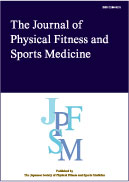8 巻, 5 号
選択された号の論文の7件中1~7を表示しています
- |<
- <
- 1
- >
- >|
Special Issue
Foreword
-
2019 年8 巻5 号 p. 185
発行日: 2019/09/25
公開日: 2019/10/01
PDF形式でダウンロード (850K)
Regular Article
-
2019 年8 巻5 号 p. 187-193
発行日: 2019/09/25
公開日: 2019/10/01
PDF形式でダウンロード (1263K) -
2019 年8 巻5 号 p. 195-201
発行日: 2019/09/25
公開日: 2019/10/01
PDF形式でダウンロード (1202K) -
2019 年8 巻5 号 p. 203-208
発行日: 2019/09/25
公開日: 2019/10/01
PDF形式でダウンロード (1090K) -
2019 年8 巻5 号 p. 209-216
発行日: 2019/09/25
公開日: 2019/10/01
PDF形式でダウンロード (1452K) -
2019 年8 巻5 号 p. 217-227
発行日: 2019/09/25
公開日: 2019/10/01
PDF形式でダウンロード (2122K) -
2019 年8 巻5 号 p. 229-240
発行日: 2019/09/25
公開日: 2019/10/01
PDF形式でダウンロード (2060K)
- |<
- <
- 1
- >
- >|
